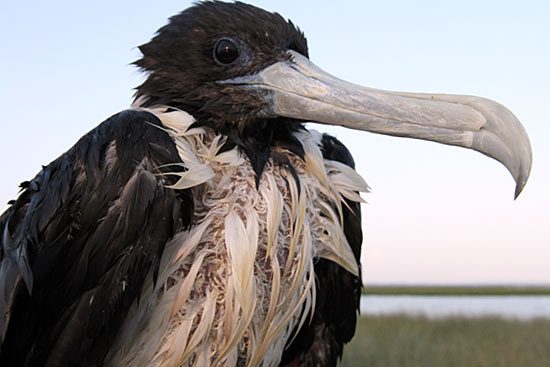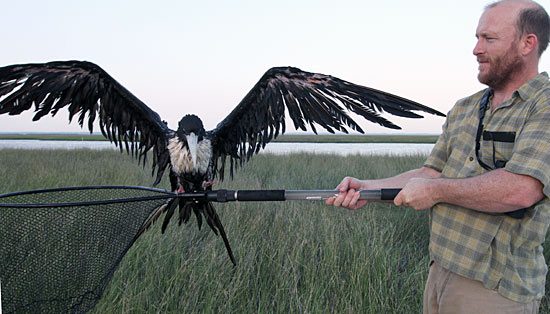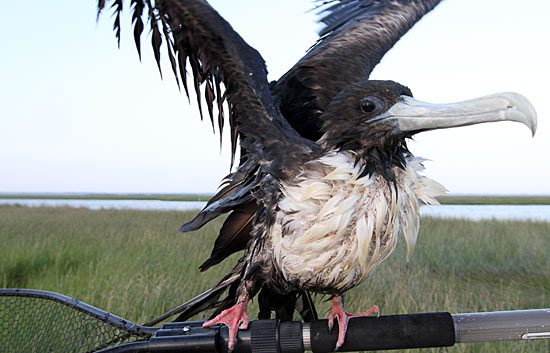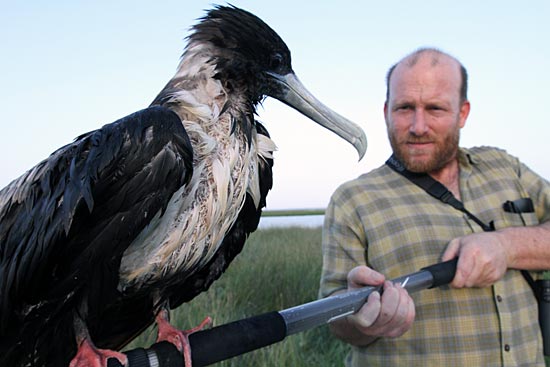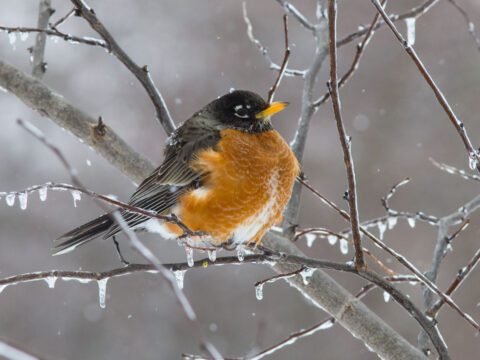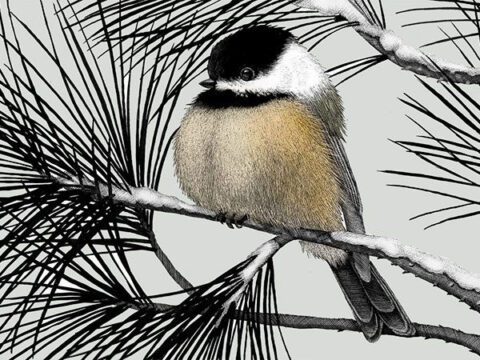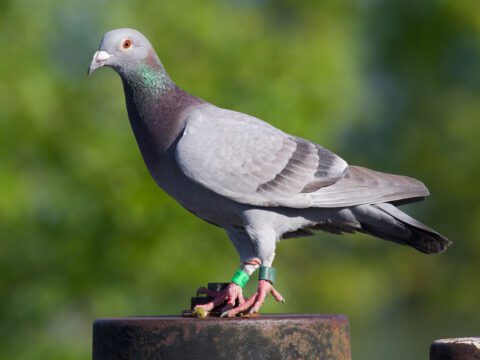Louisiana report: Helping a less-than Magnificent Frigatebird
Text by Hugh Powell. Images by Benjamin Clock.
June 22, 2010
This weakened female Magnificent Frigatebird showed little outward sign of oiling 
We helped the bird from the water and took it to an island to warm up and dry out 
The bird periodically flapped its wings, but its feathers were too wet to fly 
It was tough holding the heavy bird at the end of the net, but I didn't want to get near that bill
On our way out to Iron Banks, we passed a female Magnificent Frigatebird bobbing in open water, half-submerged. Something was wrong: these are usually the most aerial of birds. They eat many a fish without ever touching the water, by harassing terns or gulls until they give up their catch. At times, they skim close to the water and dip just their bill (the kind of appendage Captain Hook would be proud of) to snatch surface prey.
This was a bird in trouble. Tables had turned, and Laughing Gulls were buzzing low over the frigatebird’s head. When they decided it was sufficiently exhausted, they would likely attack. Every few minutes it would beat its long, W-shaped wings against the water, but couldn’t get clear.
We thought it might be snagged on a buoy or crab trap, but when I scooped it with Capt. Iverson‘s fishing net it came right out. We headed for the nearest patch of saltmarsh so the bird could dry out and warm up. It perched calmly—if a bit dejectedly—on the net handle, shivering. Water streamed from the bird’s foot-long wing feathers and from the long edges of its scissor tail.
Strangely, considering its condition, the bird showed no sign of oil, except possibly a light tan stain on some of the breast feathers. Its head was dry and its dark eye alert. Pink webbed feet with curved nails grasped the net handle. The breast and belly were so wet I could see straight through to the skin.
Frigatebirds are big. This one felt extra heavy out on the far end of the net, but I didn’t want to get much closer. I kept imagining that bill hooking in to some meaty part of my arm. The thing had a supremely utilitarian look—the seams between the straight bill and the rough hook didn’t even seem completely joined. It was looked more like it had been manufactured than actually grown.
I watched the bird watching me, its eye darting, the delicate blue skin pulsing at the base of its bill. I felt just as uncomprehending as the bird when it comes to understanding this oil spill. Had we just found a weak bird, or had it plucked an easy meal from oily water a day or two ago? How many more frigatebirds, and how many more species, are suffering effects that we don’t know how to measure? These are the questions that scientists are working on right now, though the answers may not arrive for years.
We dropped off the bird on a sunny patch of matted grass after the worst of its shivering had subsided—but not before it stretched out its neck, spread its wings to their full seven feet extent, and flapped them a few times—whacking me in the head on each pass.
Just to be on the safe side, Iverson reported the bird to Louisiana Department of Wildlife and Fisheries, giving them the coordinates of the saltmarsh where we left it. We heard from the rescue team about two hours later. They were taking the frigatebird to a rehab center.

All About Birds
is a free resource
Available for everyone,
funded by donors like you
American Kestrel by Blair Dudeck / Macaulay Library
